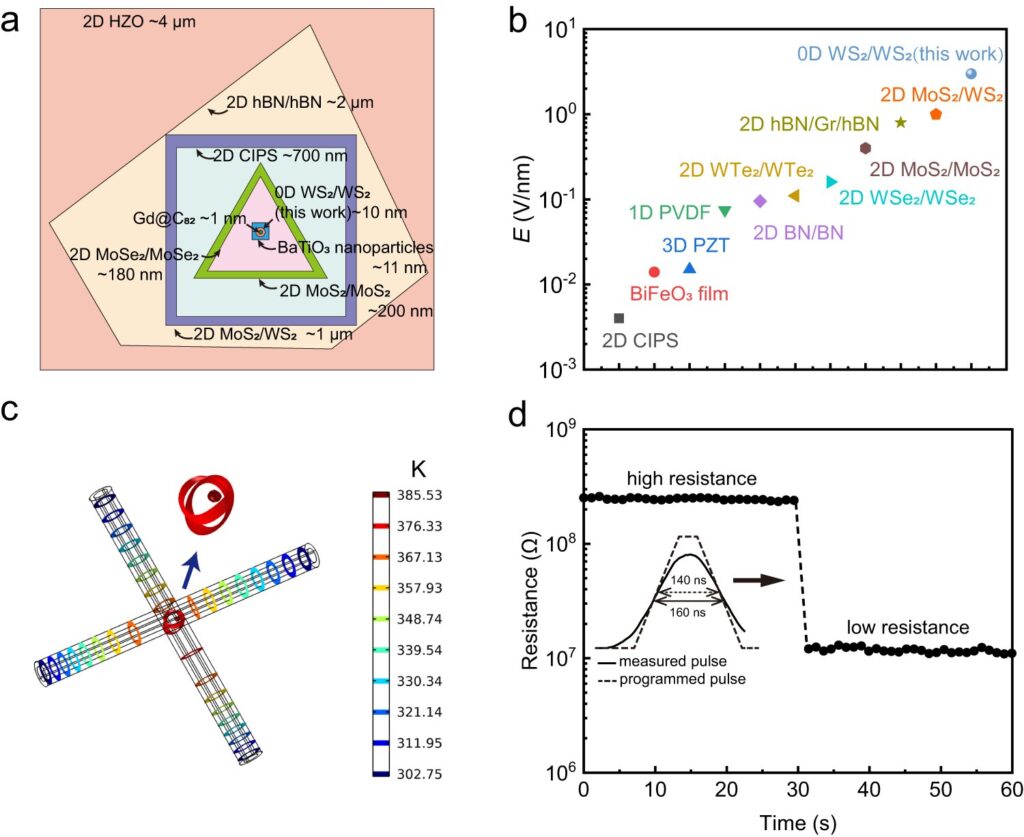Recent research has broken the size limitation of traditional ferroelectric effects, providing experimental evidence and theoretical simulations to confirm that a structure with as few as 5,000 atoms can still exhibit solid-state ferroelectric effects.
The studies, by a joint team from Israel and China, are published in Nature Electronics and Nature Communications under the titles “Ferroelectricity in zero-dimensional” and “0D van der Waals interfacial sliding Ferroelectricity,” respectively.
The ferroelectric effect is a physical phenomenon discovered in the early 20th century by Joseph Valasek, and it provides an important technological route for achieving information storage. Traditional ferroelectric effects are subject to size limitations.
“When the size of traditional ferroelectric materials decreases, the significant influence of depolarization field can cause the original polarization characteristics to disappear,” explain Prof. Guo Yao and Prof. Alla Zak. “This size effect limits the application of ferroelectric materials in high-density storage devices.”
Prof. Guo Yao from Beijing Institute of Technology, Prof. Alla Zak from Holon Institute of Technology, and collaborators used tungsten disulfide nanotubes to construct an interface with around 5,000 atoms at the nanoscale, and observed resistance change and hysteresis phenomena in ferroelectric diodes at the interface.
Through further experimental and theoretical verification, it was confirmed that the electrical behavior of the ferroelectric diode was due to lattice slip at the interface, enabling the device to produce resistance changes suitable for information storage and programmable photovoltaic responses across almost the entire visible light wavelength range. “We are surprised that a 5,000-atom interface system can produce such rich functionality,” say the researchers.
Prof. Reshef Tenne, from the Weizmann Institute of Science in Israel and a co-author of this study, believes that this downscaled ferroelectricity has important advantages for future high-density information storage. He also believes that this research is of great significance in the size reduction of ferroelectric devices.


